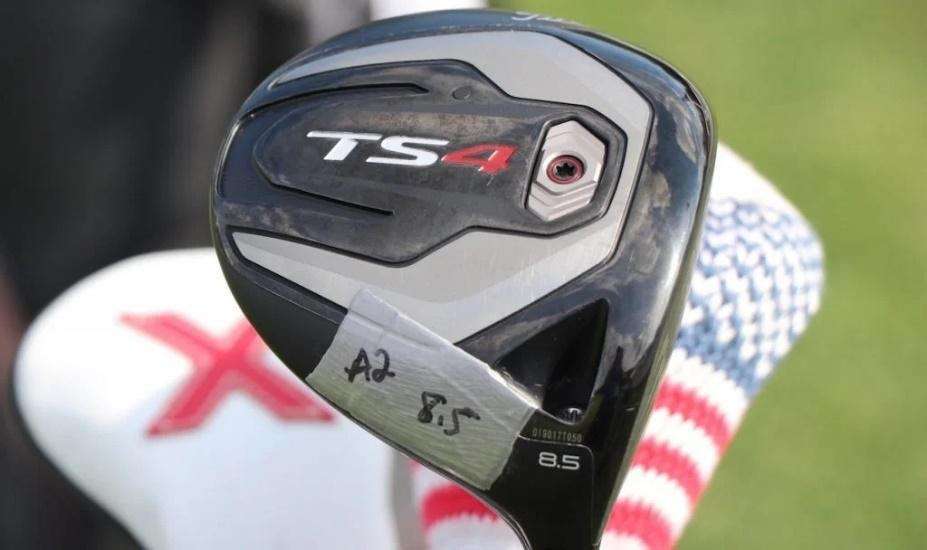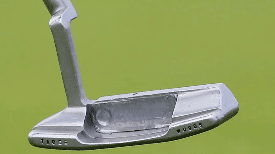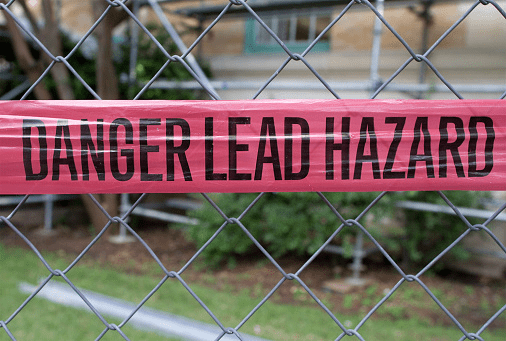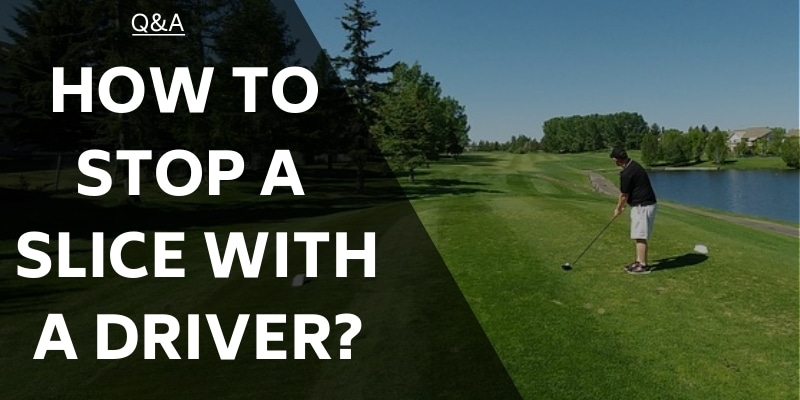You may or may not have heard of using lead tape in golf or lead tape for golf clubs. It all comes down to the concept of swing weight. When I started out playing years ago, I would see other golfers with lead tape on their club, and I had always wondered why?
Adding lead tape to your golf club was huge in the days before adjustable drivers and woods became available. The lead tape added to the swing weight of the club. Even today, as irons, wedges, and most putters are not adjustable, many golfers still use lead tape to achieve the required ball trajectory.
But adding lead tape to your golf club could also hurt your game. In this post, we’ll explain this and the idea behind using lead tape in golf. In this lead tape golf review, we will delve into how to use it, how it can help, and many more interesting aspects of this approach to your golf swing.
Why Is Lead Tape Used in Golf?
To start, we first need to understand what swing weight is. Swing weight expresses the weight distribution between the grip end and the head end of a golf club. Altering the swing weight changes the characteristics of the club and how heavy it feels during your swing sequence.
Swing weight gives you a certain feel on your clubs, which many golfers are fond of. Therefore, many golf manufacturers try to keep a similar feel on all clubs throughout a set.
Robert Adams developed the most frequently used swing weight system in the 1920s. The swing weight is determined by 3 elements, head, shaft, and grip. This is measured using Robert Adams’s Lorythmic Scale.
Swing weight measurement is taken when the club is balanced on a fulcrum, or pivot point, 14 inches below the grip end.
Robert Adams advised that 14 inches be used without supplying scientific reasoning in his patent.
Attempts to introduce alternate calculations were introduced by Kenneth Smith in the late 1940s, which were accepted at that stage but subsequently discarded.
The swing weight system introduced by Robert Adams is still the industry standard used by major manufacturers.
How is Swing Weight Calculated?
There are 3 key components in the calculation of the club swing weight:
- Clubhead weight: Changing the clubhead weight by 2 grams results in a one-point swing weight change. The higher the weight on the clubhead, the higher the swing weight.
- Shaft weight: Changing the shaft weight by 9 grams results in a one-point swing weight change.
- Grip weight: Changing the grip weight by 5 grams results in a one-point swing weight change. The heavier the grip weight, the lower the swing weight.
How Much Lead Tape To Change The Swing Weight?
You will need to use a 4-inch-long strip of half-inch-wide lead tape to equal one swing weight point.
How is Swing Weight Displayed?
To identify the various swing weights, Robert Adams used a two-digit notation ranging from A0 for the lightest swing weight through G9 for the heaviest swing weight.
Men’s clubs are generally between D0 and D2, while women’s clubs range between C5 and C7.
You must have the current swing weight as a baseline before changing the swing weight of your clubs. This will assist you in placing the lead tape in the correct positions.
Is Lead Tape Still a Thing?
You won’t need to use lead tape if your clubs are custom-fitted. But this can cost an average of $100 to $200, in addition to the cost of the clubs. With the price of fittings is decreasing, fewer golfers are using lead tape.
Many golfers and coaches still use lead tape to save money.
Watch this video to see how to apply lead tape to your golf clubs.
Where to Apply Lead Tape to Help Your Golf Game?
Lead tape is generally applied to the clubhead and the shaft to alter key characteristics of the club. In general, a 1-inch strip of lead tape weighs in at 1 gram.
It is crucial that the area where the lead tape is added be clean to ensure that it doesn’t slip when swinging hard.
To apply lead tape: clean the area with soap and water. Then dry the area. Finally, sand it down lightly with 200-800 grit sandpaper.
Once applied, you have to flatten the lead tape. It is quite common for golfers to use a golf ball to flatten the tape, but you can use any flat surface to flatten the tape.
Neutral Lead Tape Application
Placing the lead tape in a neutral position will add weight to the clubhead but will not alter your ball flight.
Toe Lead Tape Application
If your preferred shot shape is a fade, placing the lead golf tape will slow down the club’s toe, resulting in a more open face promoting the fade shape.
Heel Lead Tape Application
This is more aimed at gofers that want to create a draw shape. Placing the lead tape at the heel allows the toe-end to close faster, promoting a draw.
Rear Lead Tape Application
Golfers that struggle with getting the ball airborne and forgiveness need the center of gravity to be moved towards the center back of the clubhead.
With the center of gravity towards the back, you will generate more spin, thus getting the ball airborne quicker.
Forward Lead Tape Application
In contrast with the golfers that cannot get the ball airborne, some golfers hit the ball too high. Placing the golf lead tape on the club’s sole towards the front will move the center of gravity forward.
This will produce a penetrating ball flight.
Ensure that the lead tape does not obstruct the clubface as this will impact the quality of the contact.
Shaft Lead Tape application
Excellent golfers such as Sergio Garcia and Jack Nicklaus have created a counterbalance by adding lead golf tape to the shaft below the grip. This helps the golfer to increase swing speed by making the clubhead lighter.
Development in shafts resulted in many manufacturers creating counterbalanced shafts, thus removing the need to place lead golf tape on the shaft.
The Use of Lead Tape on Different Clubs
Lead Tape on Drivers

As with moveable weights on your driver, lead tape positioning can tremendously affect your shot shape.
Lead Tape on Irons
It is recommended that when adding lead tape to irons that you place the lead tape on irons in the area where most of the weight is located.
Professional golfers generally apply lead tape directly behind the middle portion to increase the clubhead weight for increased accuracy.
On cavity-backed irons, it is recommended that you place the lead tape into the cavity for straighter shots and the heel or toe, depending on the change desired.
Lead Tape on Wedges
You are less likely to shape the ball flight of wedges too much, but you can still use lead tape on wedges. Ideally, the weight is added behind the center of the wedge. The additional weight can improve your benefit ball flight and ball striking.
Lead Tape on Putters

Even one of the best golfers of all time uses lead golf tape on his putter. 15-time major champion Tiger Woods has done this on occasion.
If you are not sure where to place the lead tape, it is recommended that you place it on the sole.
Sole of Putter
By placing the lead tape on the putter’s sole, you will square the putter face at impact. This is ideal for golfers that tend to close or open the clubface at impact.
Placing golf lead tape behind the putter’s center adds weight to create a stronger stroke which is crucial when putting on greens slower than you are used to.
Reviews of the Top Lead Tape in Golf Options
Below are some of the different lead tapes for golf clubs available right now.
Golfers Edge Unique Sports Golf Lead Tape
This roll of Golfers Edge Lead Tape measures ½ inch wide and 72 inches long. A 2-inch strip weighs 1 gram.
There is an adhesive on one side of the tape to easily secure it to your club.
This American manufactured lead tape is legal.
SummerHouse Lead Tape
SummerHouse Lead Tape comes in a roll that is ½ inch wide and 100 inches long, weighing 1 gram per inch.
HOW TRUE Golf High-Density Lead Tape
The How True High-Density Lead Tape weighs in at 1.42 grams per inch, meaning you can use a shorter piece to achieve the same results as Golfers Edge and SummerHouse lead tape.
Each pack consists of 2 rolls that are ½ inch wide and 33 inches long.
One side contains adhesive for ease of applying it to your clubs.
It is adhesive-backed, so it sticks securely to the club. By using and changing lead tape placement, you can change ball flight.
Brampton Lead Tape for Golf Clubs
Brampton Lead Tape for Golf Clubs measure ½ inch wide and 100 inches long. It comes in 5 mm and 10 mm thickness.
To securely attach the tape to your club, it comes with an acrylic adhesive on the back.
Gejoy Golf Weighted Tape Golf Strips
Unlike most lead tape that comes in the form of a roll, Gejoy weighted tape comes in a strip measuring 0.4 inches wide and 2 inches long.
Each pack contains 30 pieces, giving you up to 60 inches of tape to use.
The Gejoy lead tape has a removable paper backing that must be removed before placing it on your clubs.
FAQs

Is Lead Tape Safe?
Despite the information about lead poisoning, the lead tape is generally considered safe to use, provided you take the necessary care in storing and using it properly.
The use of gloves when using lead tape is highly recommended. Placement of lead tape should be in positions that a golfer does not frequently have to touch.
Lead tape must be stored in a dry place where children cannot access it. Avoid storing lead tape in your golf bag to prevent it from contaminating other items.
Is Lead Tape Legal In Golf?
The use of lead tape is still legal in golf, but you must place it on the club before starting your round of golf.
The USGA rules (page 20) stipulate that lead tape can be used to adjust a club. However, this must be done before the round starts, and you may not replace it during a round.
Do Pro Golfers Use Lead Tape?
Although most professional golfers are provided with custom-made clubs, they still use lead tape to alter the weight of their clubs sometimes.
How Do You Put Lead Tape on Wedges?
Generally, the lead tape on wedges is placed behind the center of the clubface to add more weight and enable you to hit higher or lower shots.
How Do You Use Lead Tape on a Putter?
Lead tape can be used behind the clubface, on the sole of the putter, or on the putter’s shaft.
Does Lead Tape Affect Ball Flight?
Yes, the positioning of lead tape on the clubhead will enable you to adjust the trajectory and ball flight. The further to the rear and lower, the more spin is generated, while positioning it on the toe or heel will promote a draw or fade.
Final Thoughts
The use of lead tape golf has been around the golfing community for a long time before adjustable drivers and woods became available.
You can improve your ball trajectory by altering the center of gravity and producing your required ball flight, whether it’s a draw or fade, by placing the golf lead tape on the heel or toe of the club.
If you’re looking to buy lead tape for your golf clubs, this is our favorite:







